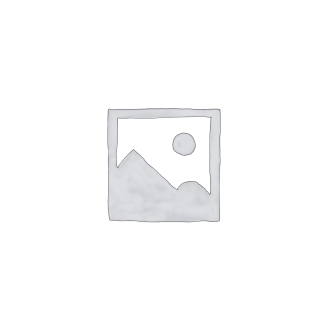FREITAG, Johann
FROM THE LIBRARY OF THE BARON DE BRUNY
Aurora medicorum Galeno-chymicorum.
Frankfurt, Impensis Joannis Theobaldi Schönwetteri, 1630.£3,750.00
FIRST EDITION. 4to. pp. (xvi) 642 (xxx), wanting final blank. Roman letter. Engraved t-p by Matthäus Merian the Elder depicting famous alchemists and proponents of chemical medicine, including Paracelsus, miners at work and an apothecary’s shop. Woodcut initials, head- and tailpieces, typographical headpieces. Small repair to verso of t-p at upper corner, offsetting. Paper flaw to Ll2 affecting one word and side note. Single small wormhole to inner margin and gutter beginning Xxx4, wormtrack from Ffff, mostly marginal but affecting a few words and sidenotes, wormtrack to upper margin of quire Bbbb, affecting running header. Some ll. browned, some spotting and oxydisation (very poor quality paper), the odd ink or oil stain. A perfectly reasonable copy in original vellum, sprinkled edges, contemp. ms. geometrical diagram to upper cover. Autograph to t-p, ‘De stuller(?),’ another in a different hand dated 1695, C18 autographs to t-p and front pastedown of ‘P. (?) Garidel,’ possibly the French botanist Pierre Joseph Garidel (1658-1737), late C18 or early C19 inscription to front pastedown, ‘Bibliothèque de M. le Baron de Bruny,’ almost certainly Jean-Baptiste Jérôme Bruny, Baron de la Tour d’Aigues (1725-95)’ with (sale?) number. Occasional contemp. ms. marginal marks and manicules.
Rare first and only edition of this guide to purgatives derived from chemical medicine and alchemy. The author Freitag (1581-1641) was professor of medicine at Osnabrück, where he was also physician to the bishop, to whom this work is dedicated. He combines chemical medicine with humoral theories based on Greek Hippocratic and Galenic medicine, producing what is both a serious theoretical work on humoral purgation and a practical guide with recipes and instructions. Freitag uses Paracelsian recipes for several purgatives, which is interesting given the vocal opposition to Paracelsianism for which he became known, especially in his battles with his ‘nemesis’ Daniel Sennert (1572-1637).
Freitag first advises on preparation of the humours for purgation, which ones must be thickened, made dry, cold, etc., and how to do so, using baths, diet and medicines. If not purged, he warns, humours can putrefy, which leads to fevers and abscesses. Freitag advocates bleeding in extreme cases but prefers pharmaceutical purgatives. He describes, for example, the use of such purgatives in cases of dysentery. The second part of the book is a catalogue of botanical ingredients, stones and chemicals, describing their effects on the humours and what they can purge, and providing recipes for their use in syrups, electuaries, etc. The third book then revisits these ingredients and describes how to make them into pills, drawing chiefly on the Arabic physician Mesue.
The final book is a study of mercury, both as a naturally occurring chemical substance and as a poisonous metal, with recipes for the preparation of non-harmful mercurial cures. It is here that Paracelsus gets rough treatment from Freitag, on account of his ‘mythologia’ concerning ‘vital mercury,’ which he saw as a kind of bodily eternal substance. Freitag describes what must be to any Christian man the ‘monstrous, fantastical, diabolical and worthless’ opinions of Paracelsus, which the latter has introduced ‘to the stage’ like a conjuror. Freitag attacks the idea that poisonous mercury can be used in medicines, noting that the bodily substance and the metal are entirely opposed. In a final all-out attack, he calls Paracelsus a blasphemer and conflates his doctrine of earthly, eternal substances with the beliefs of the hermetical sect of the Rosicrucians, who had emerged in Germany in the first decades of the C17th.
This copy almost certainly comes from the library of Jean-Baptiste Jérôme Bruny, Baron de la Tour d’Aigues (1725-95), a French enthusiast of the natural sciences who established an exotic menagerie and arboretum at his château near Aix-en-Provence, as well as an amateur porcelain factory, and in addition possessed a rich library of scientific works that was dispersed after the French Revolution; possibly the number entered in the book refers to an undocumented sale of his library. It seems quite likely, therefore, that one of the earlier owners who has autographed this book was the French botanist Pierre Joseph Garidel (1658-1737) who resided his whole life in Aix and was professor of botany at the university.
OCLC notes copies in the US only at Harvard, NLM and the Science History Institute, Pennsylvania. Not in Ferguson. Wellcome 2415. BM STC F981. Not in Osler, Heirs of Hippocrates or NLM. USTC 2112470.

